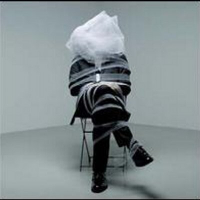Getting the handlebar height just right.
Sunderland Supporter
Posts: 210
Ive observed set ups from the pro`s to the weekend warriors. Ive seen pro bikes with bars fitted with no spacers and the saddle about 10cm higher than the bolt that attaches the headset :shock: Then I look at the angle of the rider when he is seated and with a big gap in height between saddle and headset,how do those guys manage to look upwards and forwards without straining their neck muscles to a significant degree ?
Ive seen the weekend warriors and some with a much closer approx 3cm height difference and yes , they ride in a more relaxed and upright position, but the shoulders look scrunched up and this too can lead to neck muscle pain and discomfort.
So what is the secret to being comfortable and being able to see straight ahead without causing neck strain or scrunched up shoulders ?
Ive seen the weekend warriors and some with a much closer approx 3cm height difference and yes , they ride in a more relaxed and upright position, but the shoulders look scrunched up and this too can lead to neck muscle pain and discomfort.
So what is the secret to being comfortable and being able to see straight ahead without causing neck strain or scrunched up shoulders ?
Unashamed to admit Ive zero time for Tory , Toff, In-bred , ex Public Schoolboys who are flushing our country down the crapper.
0
Comments
-
The secret to being comfortable for you is to ride fast enough that I can't get you while I'm out hunting mackems

Seriously mate, remember the pros have masseurs & even chiropractors following em about. 30 min with either of them every day & you'd manage almost any position I reckon.
For us mortals (and mackems) I'd recommend looking at your core strength. There's a lot of mileage in looking seriously into that.0 -
Just for experimentation purposes only,I set my bike up very aggressively as if I was going racing with a high saddle , my hamstrings would have been massacred,but I simply couldnt see straight ahead at all. In order to look up the road , talk about having to strain your neck muscles !!
I sat on a hybrid with straight bars too, lovely and comfy and head in a position that it was no effort to look straight ahead,but would have been blown off the road by a racing bike. Id love to get that degree of comfort ...but on a racing bike. Surely its not asking the impossible ?Unashamed to admit Ive zero time for Tory , Toff, In-bred , ex Public Schoolboys who are flushing our country down the crapper.0 -
go for comfort, not looks. there are articles on a few cycling websites that advise people specifically NOT to adopt the pro's riding position.
Everyone is different, get your position right, raise the stem but moving spacers under, or get a new shorter stem with a steeper angle.--
Burls Ti Tourer for Tarmac, Saracen aluminium full suss for trails0 -
look with your eyes and not your head. you're never going to slip into an unusual position straight away. you get used to it after 900 miles.0
-
the pros dont 'go' for a high saddle height they go for the one that suits their body and leg length. And saddle height can be deceptive depending on the frame, Russ downing for example goes for a frame smaller that his size, but has a longer stem and a higher comparative saddle height to a non compact frame. Having a saddle 'fashionably' high or low can seriously feck up your legs.
Infact theres a clip in a classic paris roubaix film a sunday in hell where eddy merckx is seen with a tape measure to get his handle bars just right for him
http://www.youtube.com/watch?v=D4IDCkcn ... re=related
from 15mins.The dissenter is every human being at those moments of his life when he resigns
momentarily from the herd and thinks for himself.0 -
Cleat is correct, your saddle height wont change, it should be set according to your leg length. Distance between pedal and top of seat shouldnt really change whether you jumped on a 58cm or a 54cm, the rest of the frames geometry would change and tweeks to stem length and rise are made to compensate.
Bar height will be determined by your riding style or flexibility. Changing stem rise and the amount of steerer spacers will get you there. Been discussed before but tests proved that aerodynamically, the lower you can get your head the better off you are (areodynamically). Not that much difference between hands on the hoods or drops. Might have been a Garmin test done in a wind tunnel at some point.0 -
Its practice.
I decided that I was more interested in looks over performance, so I slammed my handlebars down.
A few months of very a painful/knackered lower back and sore neck, and now I look like a mini-hero.
Anyway, now I've raised it a fraction - it's now comfy and I have an aggressively low position.0 -
Same as TTing, it' a balance between aerodynamics and power output. In an ideal situation, you woudl have it as low as possible while still being able to produce maximum power with your legs. This is fine for a 30/60 min TT. However for road riding, an element of comfort comes into it too as if your uppr body is aching all over after the fist hour, then you won't produce maximum power for the rest of the ride either.
In reality there is no fixed answer and it is more than likely to change for each ride. For a 60 min Crit then you could have it very low as you ll be in agony either way, but for a 500km endurance ride then you would raise it a bit as (e.g.) a sore back would really affect your ride. Basically it's a balance between those two extremes...
(In MTBing it's even worse as you have to factor in how able you are to move around the bike, and how much weight you have over the front wheel as well.)We're in danger of confusing passion with incompetence
- @ddraver0 -
They key to a low road-race position is flexibility, esp in the hip. If you have been racing through your teenage years you grow up into this position but if you come to racing as a grown up, you may have a hard time adopting the stance.
Triathletes get aero by rotating their whole riding position about the bottom bracket, lowering the bars, moving the saddle up and forward. This permits a flat back without the extreme hip flex. The classic tri position is illegal for UCI racing. The saddle position affects how much weight you transfer to your arms and UCI limit this to -5cm from the bottom bracket.
Triathletes and TTers both use aerobars. These close down the parachute effect of wide arm positions and ensure airflow around the body. If you want to get serious, you could look at your crank Q factor, affecting the width of your body.
There is more to aerodynamics than simply getting very low.0 -
watching some pro riders, some arc their back to straighten the pelvis/hip angle and also get the head down but you have to be carefull not to limit you breathing capacity.0



